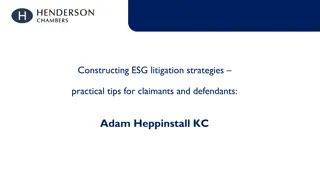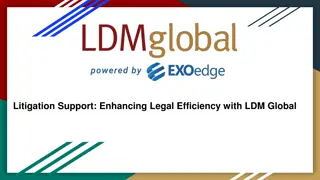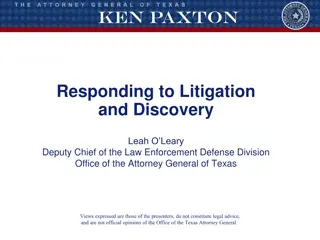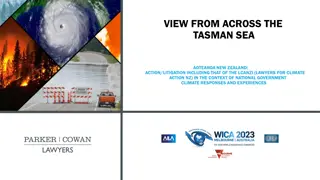Arch/PUA Design Professional Litigation Review Presentation
The presentation discusses indemnification for 3rd party claims in construction contracts, highlighting a court case where the indemnity clause could not be used for 1st party claims. It emphasizes the importance of clarity in indemnification clauses to differentiate between liabilities faced from third parties and damages resulting from contract breaches. Additionally, it warns of court decisions where even first party claims can be made under indemnity clauses.
Download Presentation

Please find below an Image/Link to download the presentation.
The content on the website is provided AS IS for your information and personal use only. It may not be sold, licensed, or shared on other websites without obtaining consent from the author.If you encounter any issues during the download, it is possible that the publisher has removed the file from their server.
You are allowed to download the files provided on this website for personal or commercial use, subject to the condition that they are used lawfully. All files are the property of their respective owners.
The content on the website is provided AS IS for your information and personal use only. It may not be sold, licensed, or shared on other websites without obtaining consent from the author.
E N D
Presentation Transcript
Arch/PUA Design Professional Litigation Review Presented for: a/e ProNet Spring 2017 Meeting Scottsdale, Arizona March 2 J. Kent Holland, J.D. ConstructionRisk, LLC Kent@ConstructionRisk.com 703-992-9480 (o) 703-623-1932 (c) 1
PUA/ARCH PROGRAM THE PILLARS OF OUR PROGRAM Unparalleled Underwriting Expertise + BEST IN CLASS SERVICE Strong Paper (Arch is rated A+ XV by AM Best) Broad Coverage Superior Claims Handling Robust Risk Management Services Provided by Kent Holland ConstructionRisk, LLC Contract Reviews - Redlined 1-800 # Hotline Webinars (AIA certified) o o o o Professional Underwriters Agency | |
Indemnification for 3rd Party Claims Only After KR received GMP contract award, KR subcontracted engineering firm to provide balance of design services for the project. Later, KR claims A/E designs were flawed, and it had to make midstream corrections to comply with various code requirements, and thereby incurred unexpected costs. Made claim against A/E under indemnity clause. Court held against the indemnity claim Suit based on indemnification could only seek damages resulting from 3rd party claims against the Indemnitee (KR). The indemnity clause could not be basis for 1st first party KR claims to recover its financial losses. Hensel Phelps Construction v. Cooper Carry, Inc., 2016 WL 5415621 (U. S. District Ct., District of Columbia, 2016). (See next two slides) 5
The clause: indemnify, defend and hold harmless [the contractor] from any claim, judgment, lawsuit, damages, liability, and costs and expenses, including reasonable attorneys fees, as a result of, in connection with, or as a consequence of [engineer s] performance of the Services under this Agreement . Court, says engineer, naturally, argues that this clause refers only to liabilities that [contractor] would face from third parties, not to [contractor s] own damage and costs and expenses from contract breaches. According to the court: The words damage and costs and expenses in the indemnification clause are listed along with other words that clearly anticipate the problem of third- party litigation against [contractor] for problems that [engineer created . [ ] Reading the indemnification clause in the most obvious way, it requires [engineer] to cover [contractor]s] liabilities when, and if, a third party sues over problems caused by the [engineer s] fault. 6
Does Indemnity Only Apply to 3rd Party Claims? Beware of court decisions that have held that even first party claims can be made under indemnity clauses. e.g., Wal-Mart v. Qore Environmental 7
Engineer Required to Defend Client against Routine Contractor Claim Trial court held A/E owed its client, the town, a defense against a contractor suit that alleged that the plans and specifications prepared by the engineer and provided by the town to the contractor for bidding and construction were defective. It was a routine breach of contract claim by the contractor against the project owner, but the court concluded the indemnification agreement in the engineer s agreement with the town was broad enough to obligate it to defend the town against the contractor s claim. Penta Corporation v. Town of Newport v. AECOM Technical Services, Inc., No. 212-2015- CV-00-011 (Merrimack, New Hampshire Superior Court, 2016). 8
KR filed suit against town to recover payments it alleged were owed it under its construction contract. Complaint asserted construction was in accordance with engineer s plans and specs that called for a specific brand of disc filters for a wastewater treatment facility that were not capable of handling required wastewater flow. Upon receipt of the suit, the town sent the engineer a demand for a defense against the contractor s suit pursuant to the terms of the indemnification clause in the contract between the engineer and the town. The engineer responded to the town s demand, stating it would not defend (or indemnify) the town because the allegations of the contractor were not directed at the engineer. 9
The Indemnity Clause Court found broad duty to defend based on this language: shall indemnify, exonerate, protect, defend (with counsel acceptable to the Town . . .), hold harmless and reimburse the Town . . . from and against any and all damages (including without limitation, bodily injury, illness or death or property damage), losses, liabilities, obligations, penalties, claims (including without limitation, claims predicated upon theories of negligence, fault, breach of warranty, products liability or strict liability), litigation, demands, defenses, judgments, suits, proceedings, costs disbursements, or expenses of any kind or nature whatsoever, including without limitation, attorneys and experts fees, investigative and discovery costs and court costs, which may at any time be imposed upon, incurred by, asserted against, or awarded against the Town . . . which are in any way related to the Engineer s performance under this Agreement but only to the extent arising from (i) any negligent act, omission or strict liability of Engineer, Engineer s licenses, agents, servants or employees of any third party, (ii) any default by the Engineer under any of the terms or covenants of this Agreement, or (iii) any warranty given by or required to be given by Engineer relating to the performance of Engineer under this Agreement. 10
Duty to Defend Applied to ALL Claims Not Just Tort Claims The court noted that the duty to defend applies to claims, litigation, and suits that are asserted against the town and related to the engineer s negligent contract performance. Significantly, the court concluded, This language anticipates unproven allegations, meaning the duty to defend would necessarily arise prior to any factual finding as to [the engineer s] negligence or breach. The court said, If [the engineer s] duty to defend only required it to reimburse the Town for the cost of a defense following adjudication of [the engineer s] negligence or breach, then the Town would necessarily have to choose its own counsel, thus rendering the [choice of counsel language in the clause] meaningless. 11
Arising Out Of is a Very Broad Term A/E argued that language of the clause reading but only to the extent arising from served as a strict limitation on the engineer s responsibility. The court rejected that argument, stating, The phrase arising out of has been construed as a very broad, general and comprehensive term meaning originating from or growing out of or flowing from . The phrase, according to the court, indicates intent to enter into a comprehensive risk allocation scheme. Arising out of does not mean that any losses or claims must have been caused by [the engineer s] negligence or breach. Nor does it necessarily require an action for negligence or breach. A claim merely has to involve an alleged negligent act or omission in the performance of the contract. Thus, the court concluded that the engineer s assertion that adding the words to the extent in front of arising from did not alter the broad intent of the words arising from. 12
Draft Clause to Limit Indemnity to Third Party Tort Claims The need to add third party as a modifier of claim was revealed in the decision of Wal-Mart Stores v. Qore, Inc., 647 F.3d 237 (5thCir., 2011) in which a court concluded that Wal-Mart could make a first party claim against Qore to recover losses incurred on the project even though no third party claim was ever made against Wal-Mart. That decision imposed attorneys fees on Qore by concluding that the defense obligation in the indemnification clause meant that Qore was responsible for the attorneys fees incurred by Wal-Mart in prosecuting a claim against the engineer and contractor. 13
A Sample Clause for Your Consideration Consultant shall indemnify and hold harmless (but not defend) the Client, its officers, directors, and employees, from and against those damages and costs that the Client is legally obligated to pay as a result of third party tort claims, including the death of or bodily injury to any person or the destruction or damage to any tangible property, to the extent caused by the negligence of the Consultant or anyone for whom the Consultant is legally responsible, subject to any limitations of remedies or liability contained in this Agreement. 14
Indemnification Action Only Accrues for Statute of Limitation Purposes on Date Indemnitee Pays Judgment or Settlement Sub failed to honor contractual indemnification obligations to defend and indemnify prime KR. The prime and its insurance carrier sued Sub to recover settlement costs of a claim. Sub argued statute of limitations for enforcing the indemnity agreement had lapsed. Held: A cause of action for breach of an express indemnity agreement (contractual indemnity) accrues when the indemnitor sustains the loss by paying the money sought to be indemnified from the Indemnitee. The indemnity does not accrue for statute of limitations when the original accident occurs, but instead accrues when the tort defendant pays a judgment or settlement as to which he is entitled to indemnity. Valley Crest Landscape Development v. Mission Pools of Escondido, Inc., 189 Cal. Rptr. 3d 259, 238 Cal. App.4th468 (2015). (Next slide) 15
Indemnity Clause Extends Date for Suit Comment: Whereas a claim might otherwise be barred by a statute of limitations or statute of repose because it is based on a tort claim arising out of a construction project, an indemnity clause may create a wholly different cause of action that is not subject to the ordinary statutes of limitations and repose. As in this case, an indemnitte might settle a claim and bring a breach of contract action against the indemnitor for refusing to tender a defense and provide indemnification as required by the contractual indemnification clause. 16
Indemnification for ADA Non-Compliance Design Professionals that fail to design in compliance with ADA requirements cannot be sued by their clients for indemnification or breach of contract to recover the rectification costs to bring the building into compliance. It might appear that designers need not worry about language in their contracts guaranteeing compliance with the FHA and ADA requirements or promising to indemnify their clients for damages resulting from non-compliance. The decision is one of a growing number of decisions holding that federal ADA law preempts state law and contract language so that a building owner cannot be indemnified by its design professional for costs resulting from failure of the design to meet FHA and ADA requirements. Chicago Housing Auth v. Destefano and Partners, 45 N.E. 3d. 767 (Illinois 2015). 17
Standard of Care May Exceed Code Requirements Two-year-old child fell to his death from the third floor of Staples Center in Los Angeles. Parents sued owner of the arena, arguing it negligently breached a duty of care owed to patrons. The appellate court reversed summary judgment for owner because foreseeable that someone would sit or stand on the shelf, and could suffer injuries or death from a fall. Even if arena owner could prove it conformed to building codes, that would not be a complete defense in a negligence action. The individual facts would have to be considered to determine what reasonable care required. Henry Tang v. NBBJ, LP, 2014 WL 555163 (Cal. Appl. 2 Dist. (2014). 19
Contractor not Excused from Violating Building Code Even if Homeowner Directs Him to Violate the Code Where homeowner directed roofing contractor to perform work in a manner that violated the building code, KR was liable for a per se violation of the code. Homeowner s waiver of code requirements does not preclude the KR liability for violation. Code permitted no more than two layers of roofing on the building. Appellate court held it was an error for trial court to direct jury not to award damages if found homeowner directed the non- compliance. Because jury found KR violated the code, judgment must be granted to the homeowner. Downey v. Chutehall Construction Co., 88 Mass. App. Ct. 795 (2016). 20
Designer not Liable for Implied Warranty of Habitability on Condo Condo association filed suit against a number of the parties involved in the design and construction of the condo complex, alleging breach of implied warranty of habitability. Association attributed air and water infiltration to latent defects in the design that were not discovered until 2007. Trial court dismissed suit against designer, and appellate court affirmed dismissal. Board of Managers of Park Point at Wheeling Condominium Ass n v. Park Point at Wheeling, LLC, 2015 IL App (1st) 123452 See next slide 22
A/E Does Not Warrant Perfection Court cited the principle that an architect does not warrant or guarantee perfection in his or her plans and specifications is long standing Court found implied warranty should be limited to subcontractors who were involved with the physical construction or the construction-sale of the property. See next slide 23
Designers are not workmen Court rejected condo association's argumentthat DPs have an implied obligation to perform their tasks in a workmanlike manner. Citing to Black's Law Dictionary, the court noted a workman is a person who is employed in manual labor, skilled or unskilled." Thus the term workmen does not include professional persons such as design professionals, and design professionals are not obligated to perform their professional services in a workmanlike manner. Contract Lesson: Architects and engineers should be careful not to agree to contract provisions that require them to perform their services in a "good and workmanlike manner." While the phrase is seemingly innocuous, a court could find that it imposes a higher standard than the professional standard of care. 24
Engineer Can be Sued for Breach of Warranty of Professional Services Pulte Homes sued A/E that performed engineering and testing services for it. After resolving defects asserted by the homeowner through arbitration proceedings, Pulte sued A/E to recover damages paid homeowner. The theories of recovery included a claim based on breach of express or implied warranties. Pulte alleged that S&ME expressly or impliedly warranted to Pulte that all work performed by them would be performed in a careful, diligent and workmanlike manner, and that any materials and/or services designed, supplied or sold by them for use on the project would be merchantable and fit for their intended or specific purpose. In reviewing the contract language, the court agreed that it includes language arguably in the nature of an express warranty. Pulte Home Corp. v. S &ME, Inc., 2013 WL 4875077 (U.S. District Court, South Carolina, 2013). 25
Contract Drafting Tip Some design professional contracts I review contain so many blatant or hidden warranties buried throughout the fine print of the Agreement that I have found it necessary to create a catch all clause to attempt to disavow all warranties, just in case one slips through the cracks even after we have attempted to find and delete them all. A clause that I use for this purpose is as follows: Standard of Care. Notwithstanding any clause in this Agreement to the contrary, Consultant expressly disclaims all express or implied warranties and guarantees with respect to the performance of professional services, and it is agreed that the quality of such services shall be judged solely as to whether Consultant performed its services consistent with the professional skill and care ordinarily provided by firms practicing in the same or similar locality under the same or similar circumstances. Nothing in this Agreement shall be construed to establish a fiduciary relationship between the parties. 26
Engineer May Be Liable to Contractor for Both Breach of Professional Duty and Negligent Misrepresentation Engineer who prepares documents that contractors will rely on when preparing their bids owes duty of care to contractors, and can be held liable for both breach of professional duty and negligent misrepresentation. Before project was put out to bid, the engineer conducted geological studies and prepared reports describing the conditions on the project. Geotechnical Baseline Report ( GBR ) was furnished to bidders so they could estimate the cost of performing the work. The GBR indicated that the majority of the subterranean region was composed of stable soils suitable for HDD. Apex Directional Drilling, LLC v. SHN Consulting Eng rs & Geologists, Inc., 2015 U.S. Dist. LEXIS 105537 (N.D. Cal. Aug. 11, 2015). See next slide 28
Contractor encountered mud and flowing sands very different from the soils described in the GBR. When contractor reported these different conditions to city, the engineer continued to maintain that the project was proceeding in the competent soils described in the GBR, and, on that premise, repeatedly gave Apex illogical instructions. City, acting on the engineer s recommendations, rejected change order requests and ultimately terminated the contractor. Contractor sued city for breach of contract and then filed a separate complaint against the engineer asserting claims for breach of professional duty and negligent misrepresentation. Engineer argued it did not owe the contractor a duty of care. Court found engineer owed the contractor a duty of care. See next slide 29
Court observed that in the context of a negligence claim seeking economic damages where there is no contractual privity, California courts use a six-factor balancing test to determine whether a duty of care exists. Factors are: 1) the extent to which the transaction was intended to affect the plaintiff; 2) the foreseeability of harm to the plaintiff; 3) the degree of certainty that the plaintiff suffered an injury; 4) the closeness of the connection between the defendant s conduct and the injury suffered; 5) the moral blame attached to the defendant s conduct ; and 6) the policy of preventing future harm. Court found that first, third and fourth factors favored imposing a duty of care, as the GBR was prepared for the purpose of establishing a baseline upon which the contractor would base its bid; mistakes in the GBR and the engineer s subsequent actions caused the contractor to suffer considerable losses. 30
Professional Liability Exclusion in CGL Policy
Court Applied 'Professional Liability Exclusion so Carrier had no 'Duty to Defend' Designer Under CGL Policy An architectural firm was sued by former client for improper design and for inadequate coordination with builders during construction. Architect sought legal defense from its CGL carrier who refused -- citing the "professional liability exclusion" provision in the policy. Insurer argued no duty to defend because allegations against the architect concerned the rendering of professional services. Architect argued the allegations were of mere general negligence and not specifically professional negligence. Court looked at the factual allegations and concluded they were of professional negligence . Therefore, no coverage under CGL policy. Wisznia Co., Inc. v. General Star Indemnity Co., 759 F.3d 446 (5th Cir. 2014). 32
Why A/E Firms Should Opt to Litigate instead of Arbitrate 1) A Judge and Jury in Litigation as opposed to no Jury in Arbitration; 2) Discovery and depositions in litigation vs. limited and uncertain discovery in arbitration; 3) Mediation is typically required by the Courts in litigation, but that requirement doesn't exist in arbitration; 4) Dispositive motions can be made in litigation, however, that is not a right in arbitration; 5) You have a chance to obtain a complete defense verdict in litigation, whereas in arbitration, the arbitrator often "splits the baby"; 6) You have the right to file post-trial motions in litigation, no such right exists in arbitration; and 7) You have the right to appeal the trial court verdict in Litigation - in contrast, there is essentially no right to appeal in Arbitration. From article by Terry McShane of Lee & McShane, PLLC. 34
Prevailing Party Clauses Contractually created duty to pay the prevailing party s attorneys fees is not insurable. If cannot delete the clause for the contract then at least define what it means to prevail. Consider something like this: Prevailing party is the party who recovers at least 67% of its total claims in the action or who is required to pay no more than 32% of the other party s total claims in the action when considered in the totality of claims and counterclaims, if any. In claims for monetary damages, the total amount of recoverable attorney s fees and costs shall not exceed the net monetary award of the Prevailing Party. 35
Settling Suit without Prior Approval of Insurance Carrier Causes Insured to Forfeit Coverage Regardless of Whether the Carrier was Harmed Insured subcontractor violated it policy condition to make no- voluntary payments by settling claim against it by GC and paying delay damages and damages for an accident. Did not first notify carrier and obtain prior approval to settle the dispute. When Sub subsequently sought indemnification from its Insurer, the carrier denied coverage. Court held Sub s complaint against the carrier should have been dismissed on a motion for summary judgment without regard to whether the Sub could show carrier was not prejudiced or harmed by the unauthorized settlement. Travelers Property Casualty Company v. Stresson Corporation, 370 P.3d 140 (Colorado 2016). 36
Questions? J. Kent Holland, J.D. ConstructionRisk, LLC 1950 Old Gallows Rd, Ste 750 Vienna, VA 22182 (703) 623-1932 Kent@ConstructionRisk.com 37
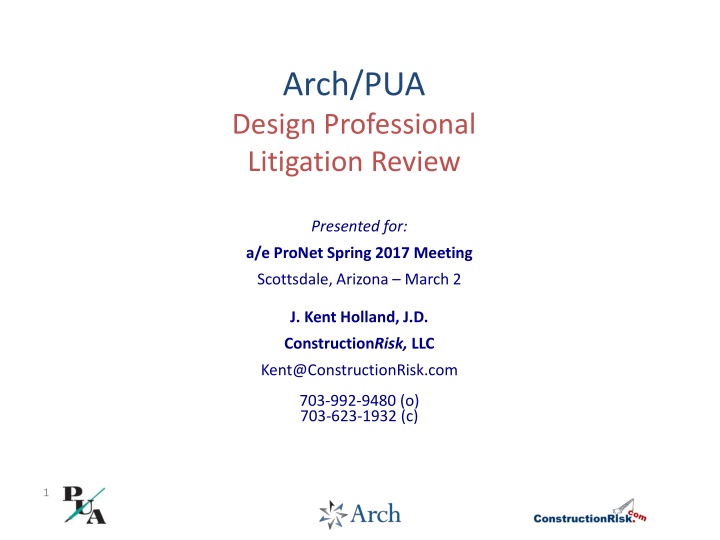



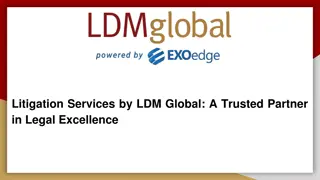
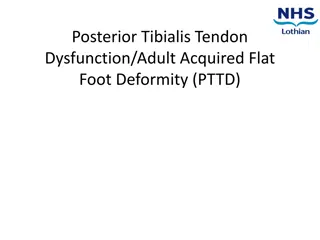
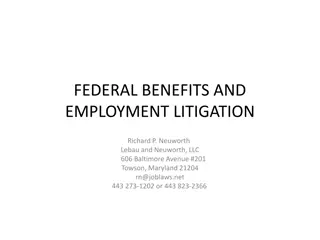
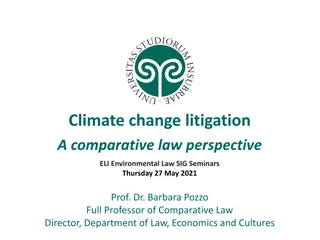
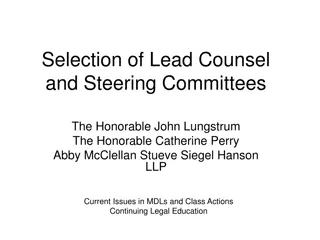
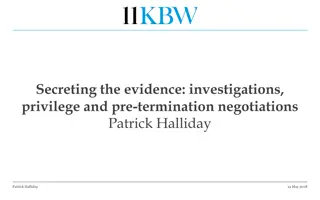

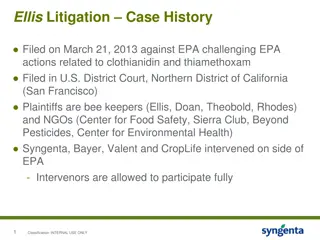
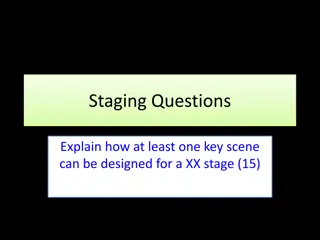



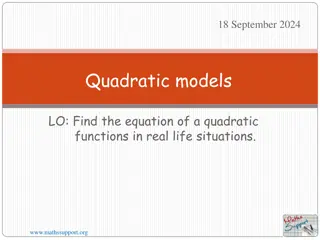
![Legal Dispute Analysis: FCA v ARCH and Others [2021] UKSC 1](/thumb/189783/legal-dispute-analysis-fca-v-arch-and-others-2021-uksc-1.jpg)
